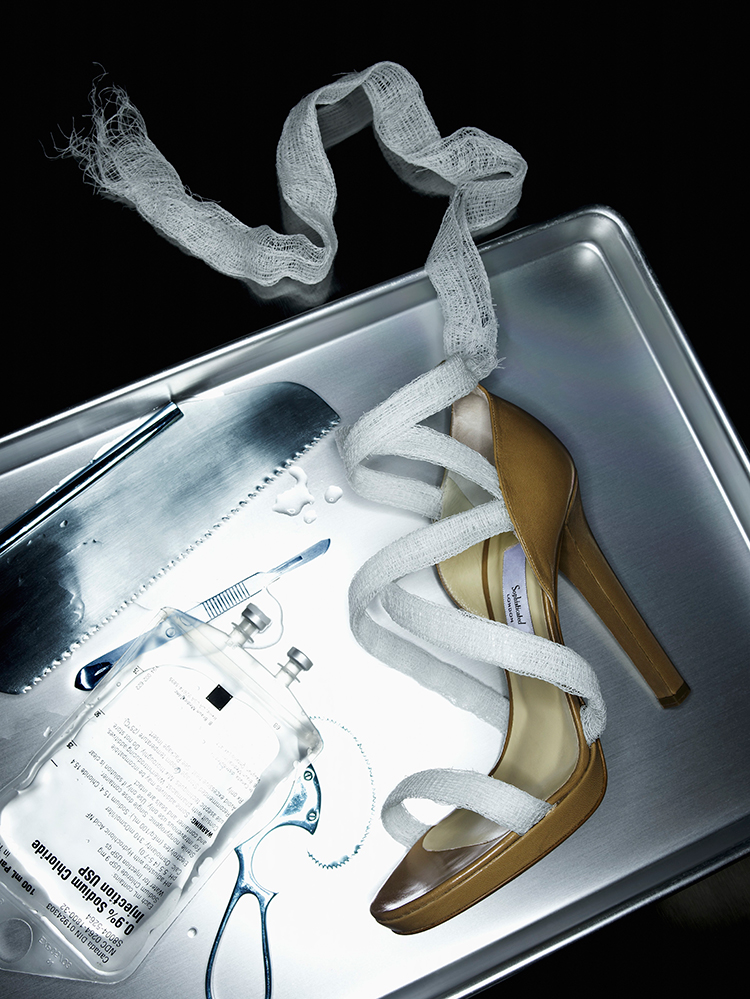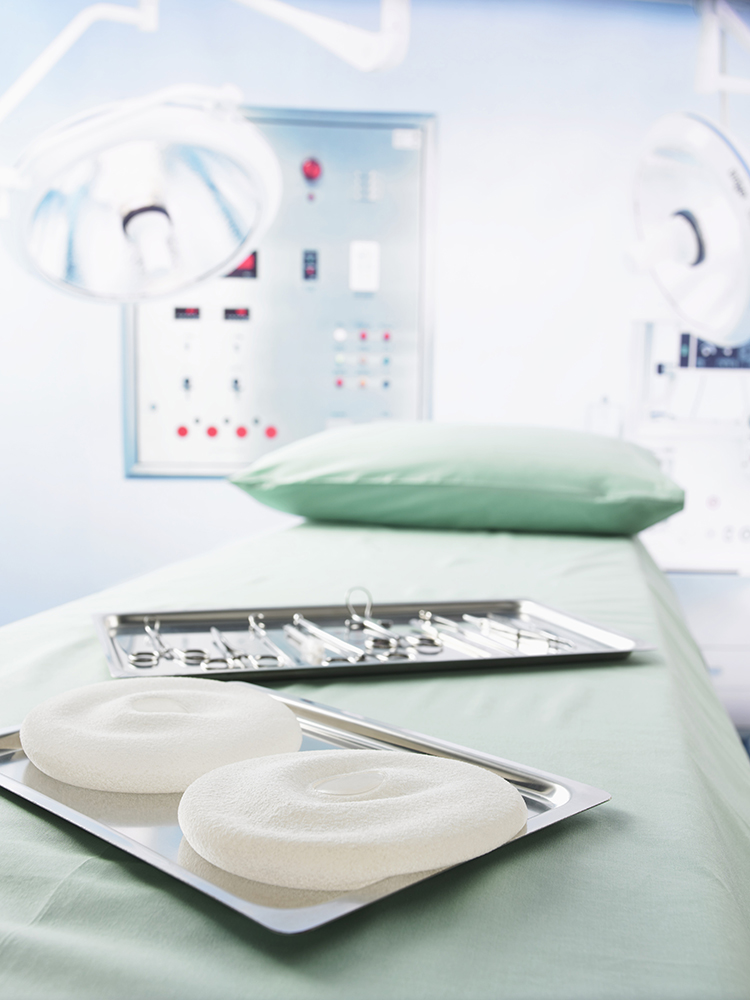
While it would be wonderful to write about the new ‘miracle cure’ for ageing, the sad truth is that there is nothing we can do to avoid the march of time. The good news is that we can prolong our youthful looks, says Nicole Curin Burch.
Many women are happy to age naturally and to let their life experiences – their laugh lines and reminders of days spent in the sun – show. Others, less so. The point is, there is a choice that can be made. You can let the ageing take its course or you can tackle it head on. Stephen Gilbert, plastic surgeon and the medical director of Prescription Skincare in Auckland’s Remuera, says he generally finds women will first look to seek advice on facial corrective procedures once they turn 40. “They see the dynamic wrinkles (laugh lines and crow’s feet) have all of a sudden appeared and that their faces have lost a bit of volume about the cheeks and they want to try and halt the process,” he says.
The first step for most is to experiment with injectable muscle relaxants like Botox and Dysport. Both of these products work by temporarily paralysing the muscles (for four to six months) into which they are injected with the effect of smoothing wrinkles out. While this helps to prevent new wrinkles forming, deep-set lines may respond better to fillers. Hyaluronic acid fillers work by adding volume into the skin to plump it back out, much like re-inflating a wrinkled balloon. Popular brands such as Restylane and Juvederm are made from non-animal sourced stabilised hyaluronic acid, which is a natural complex sugar identical to that found in the skin.
“When applicable, we always suggest these as a starting point. They do provide really wonderful results. It could be that a small improvement is really all they will need to feel confident about their appearance again,” says Gilbert.
Wonderful though they are, these are only temporary solutions which need to be repeated over and over again regularly. For women looking for a permanent fix the next step to consider is going under the knife. But when is the right time to do this? Is there a perfect age and stage? Below we explore some of the more common cosmetic surgery procedures and discuss how they work, what’s involved and how much they cost.
Eyes: Surgical costs range from $5,000 to $10,000
The skin around the eyes is often the first place to show any telltale signs of ageing. As we age, the fat pads just underneath the brow line drop, and the skin begins to lose elasticity and collagen causing lids to sag and become hooded and puffy. The overall effect can give the whole face a downcast appearance. One remedy is an eye lift or blepharoplasty. This is performed under local anaesthetic by a plastic surgeon and takes between 60 and 90 minutes. A horizontal incision is made across the natural crease of the eyelid and the excess fatty tissue is removed before the incision is finely and tightly stitched back up. Swelling and bruising can last for up to two weeks after the procedure and patients are advised to apply ice packs regularly for the first few days afterward. Once the swelling and bruising subside, patients should notice a significant improvement in the look of their eyes. “This is one procedure that can take at least 10 years off your appearance,” says Gilbert. “The result is very natural-looking and it can make a huge difference.” Puffiness under the eyes can also increase as we age. Just like upper eyelid surgery, doctors can perform a similar procedure that removes excess tissue under the eyes to leave patients with a tighter, more youthful look. Recovery after this surgery can take a little longer, but the costs are generally the same.
Facial Treatments: Surgical costs range from $5,000 to $22,000.
Let’s be honest, many a joke has been told about women and facelifts. Joan Rivers, one of the most famous ever exponents of plastic surgery, once made fun of herself by saying, “I’ve had so much plastic surgery that when I die my body will be donated to Tupperware.” But there are facelifts and there are facelifts. Like all cosmetic and plastic procedures, the best ones are those that leave a patient looking like the best version of themselves, only 10 years younger. The last thing that anyone wants is to look ‘done’. At the Skin Institute in Auckland, Dr Piergiovanni Marzinotto says he fills up to 30 sets of cheeks a week using either the patient’s own fat transfers (micro grafting) or facial fillers. “It used to be that 10 years ago we were filling 30 different lips a week as women wanted to have them as the focus of the face. Now, we find our patients like a more natural, more rested look and by replacing some of the volume back into the cheeks, it helps to smooth out lines and lifts the face back up a little. In some ways this can work better than a facelift.” Fat transfers are done using a patient’s own body fat, taken from an area where it is not needed, which is then refined and centrifuged and injected in layers back under the skin to plump the skin out and re-contour cheek lines.
“The eyes and mid-face are the places that people tend to focus on when they are talking to someone. Unfortunately, these areas tend to age fastest,” says Marzinotto. One less common alternative to fat transfers and fillers, is to have a silicone cheek implant inserted just underneath the cheekbone. Stephen Gilbert says that while effective, it often works best in combination with an AHA filler. “What people need to remember when they get these procedures done is that while we can make some definite improvements and reduce the appearance of ageing, the skin is still ageing; it’s still the same age as the patient so they need to continue to maintain it.”
Both techniques have pros and cons. Implants can cause infection, become encapsulated or move slightly out of place. Fat transplants should last a lifetime but just like any other body fat, if a patient loses a significant amount of weight the fat in their face will diminish too. When it comes to having a full surgical facelift, there are many options available. Procedures can be targeted to problem areas like a drooping brow, sagging cheeks or loose skin under the jowls, or a patient can opt to have a complete overhaul and combine surgery with fat transplants and eye lifts. The procedure is much more invasive than a fat transfer as the facial skin is lifted and re-draped so as to smooth out the surface. Small scars are left behind but a skilful surgeon will generally ensure these are hidden away in the hairline. As with any major surgery, the recovery time can be extensive. Women who have had a full facelift can expect to be out of action for up to two weeks post-surgery due to swelling and bruising and the need to keep the face supported with special bandages.
“When working with a patient, I always talk to them about what will give them the best overall outcome for the budget they have,” says Gilbert. “I also try to ensure the face is balanced. There is not much benefit in having an eye lift if your cheeks and the skin under the jawline is saggy; it will look very out of place, so it may be a case of combining different procedures to the best effect.”
Neck and Décolletage: Cost between $7,500 and $15,000.
While many of us take a great deal of care when it comes to applying sunblock and moisturiser to our faces, two areas often neglected in an anti-ageing regimen are the neck and décolletage. Like the face and hands, the neck and décolletage are exposed to damaging sunlight more often than other parts of the body. Ageing concerns such as brown spots, wrinkles and loose skin begin to manifest in these areas over time. The skin of the neck is different than that of the face; it is thinner and less resilient, and it can be very difficult to rejuvenate. “It is a very tricky area,” says Gilbert. “The skin on the upper chest is very prone to scarring so the best way to treat that is by using lasers to resurface the area and you can use a filler to plump out the deeper lines.”
Neck lift surgery combines several techniques which may include liposuction, and the trimming, removal, realignment and placement or re-draping of muscle, fat and excess skin tissue. Surgical incisions are placed in inconspicuous spots such as under the jaw and behind the ears to minimise their visibility. One non-surgical treatment for the neck and décolletage is Thermage. This uses radiofrequency energy, which is precisely delivered deep into the skin to stimulate existing collagen and restore skin’s firmness. Deep wrinkles are softened and fine lines are noticeably smoothed. Skin contours are redefined and skin tone and resiliency are improved. This is only a temporary fix though as treatments need to be repeated every six months. “We are hoping that in the near future there will be more bioregenerative treatments available that target the neck and décolletage,” says Marzinotto. “Until then, prevention is better than cure. Cover up and wear sunblock.”

Breast Augmentation: Cost between $10,000 and $15,000.
When it comes to plastic surgery, breast augmentation is second only to liposuction in New Zealand. In days gone by, bigger was always better, but now women are opting for a more natural shape that provides youthful perkiness rather than Playboy bunny glamour. “In my experience, most women are aiming for a natural-looking enhancement that looks proportionate to their frame,” says Dr Zachary Moaveni, a plastic and reconstructive surgeon at the Skin Institute. “The breast shape is also critical. A well-performed breast augmentation will take into account not only the desired size but also a lovely and aesthetic shape of the breast.”
When considering breast augmentation surgery, Moaveni says women fall into one of two age groups. “The first is women in their 20s who have small or possibly asymmetrical breasts and would like a natural-looking enhancement. The second group of women are in their 30s and 40s, after completing their family. Often after pregnancy and breastfeeding, the breast glandular tissue atrophies (shrinks away), leaving excess skin and an empty chest.”
Moaveni says that breast implants have come a long way since their development in the 1960s. One of the most promising recent improvements is the creation of new, softer cohesive gel implants that have a round shape when they are flat but take on a more natural tear-drop shape when vertical. Having a breast augmentation is a major procedure and is performed under general anaesthetic in a surgical theatre. Women will often have to stay overnight at the facility and can expect to be incapacitated for a day or two afterward. Drains will often be left in to help with swelling and bleeding. Swelling can take up to six weeks to go down and exercise has to be kept to a minimum, with no heavy lifting during this time. There is a small amount of scarring but this will be greatly diminished after about a year.
Before going ahead with the procedure, Moaveni says it’s important to have a good play around with different implant sizes and shapes to make sure you get the look you are after. “It is important too that you have a great rapport with your surgeon, ask lots of questions, and understand what the options are for you. Bring in your favourite top or dress to the consultation so you can have a go with the trial implants.”
YOUR DECISION CHECKLIST
Deciding who to choose to perform your cosmetic and enhancement surgery and treatments will have a lasting effect on your health and wellbeing for years to come. With the right surgeon you’ll look and feel wonderful, with the wrong one, you may feel worse. We asked Dr Tristan de Chalain where to start.
- Word of mouth is always a great place to start when looking for a plastic surgeon. “If someone has talked openly about having a procedure and you think they look fantastic then ask them who they would recommend. Word of mouth is so much better than asking Google.”
- Make sure your specialist is suitably qualified by checking out the New Zealand Association of Plastic Surgeons website. This has a comprehensive list of well-recognised plastic surgeons and notes their specialties.
- Most surgeons should insist on two or three consultations prior to surgery, and you should ask lots of questions. “It is not always true that the most expensive procedure is necessarily the best although it is human nature to believe this.”
- Ask your surgeon where they trained and also how many times they have performed the procedure you will be having. “The patient should make sure that the surgeon who is claiming to do plastic surgery is in fact a bona fide plastic surgeon. It is not unreasonable to ask to see his degree certificates.” You should see his credentials displayed in his office.
- Ensure the surgeon or practitioner has the same aesthetic sensibility as you do. If their patient photos show pictures of people who look overly ‘done’ and you are after a more subtle look, then perhaps that doctor is not the right one for you.
- Likewise, it is important to connect with your doctor. Gauge whether or not they are listening to you, looking at you as an individual and offering you a range of options.
- If surgical treatments are carried out somewhere other than the consulting rooms. Find out where this will be and what the credentials of the surgical staff, including the anaesthetist, are. Ask how they would be able to respond to a medical emergency. Your safety is paramount.
- Don’t be too shy to discuss money. Make sure that every quote you get is all-inclusive so that there are no surprises. Ask about payment plans.
- Be realistic. “The surgeon might find it helpful for the patient to bring along images of appearances they do, or don’t like. This is especially helpful with rhinoplasties and breast augmentation, for example.”
- Research the procedure you are wanting and ask what the risks and benefits are and likely recovery times. “Because expectations are such a grey area most plastic surgeons of any integrity will attempt to under-promise and over-deliver.”
- If you are looking at having a more invasive procedure done, take the time to document your medical history so that your specialist is well informed. There may be medical reasons prohibiting certain treatments.










